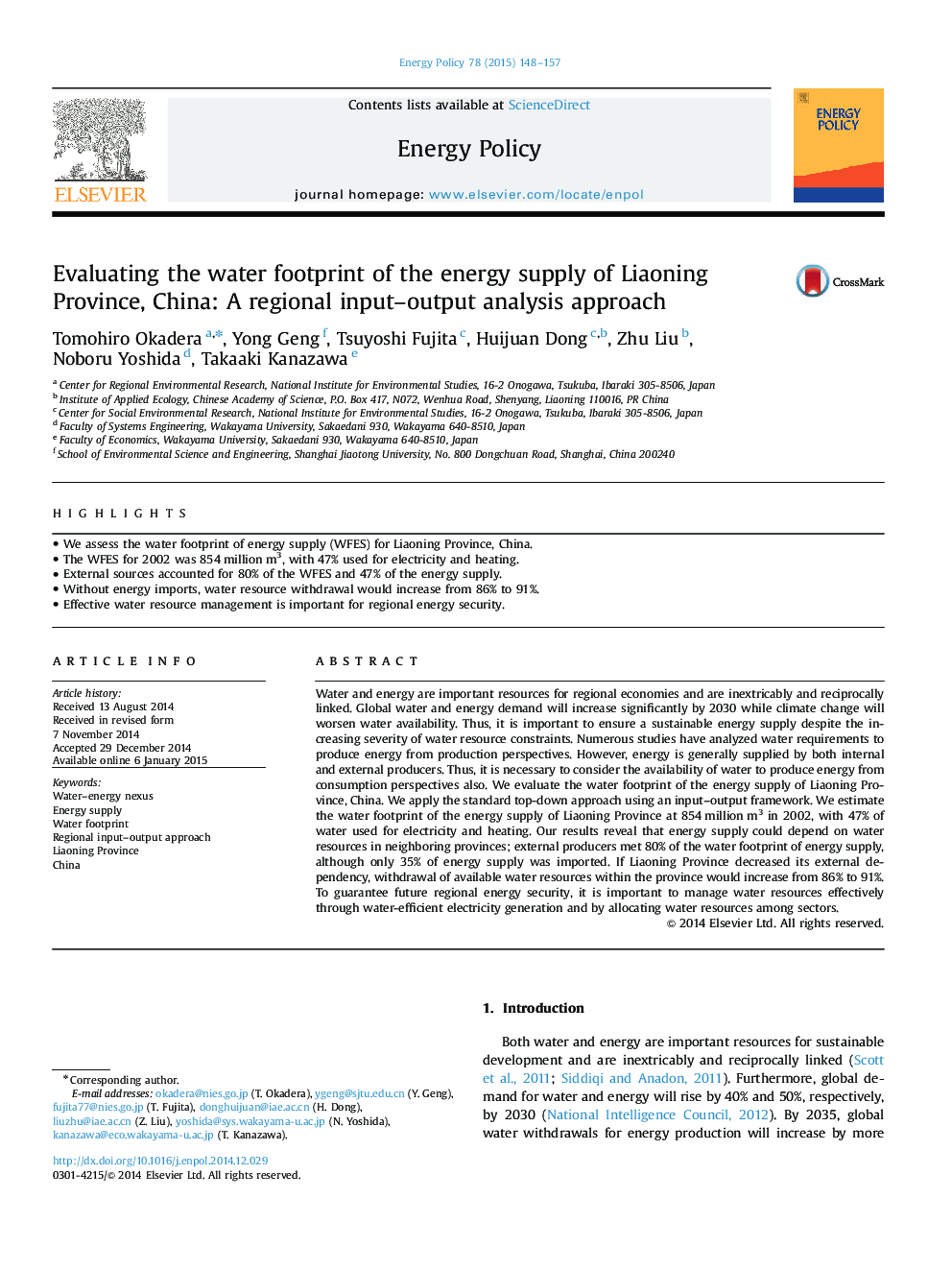| Article ID | Journal | Published Year | Pages | File Type |
|---|---|---|---|---|
| 995463 | Energy Policy | 2015 | 10 Pages |
•We assess the water footprint of energy supply (WFES) for Liaoning Province, China.•The WFES for 2002 was 854 million m3, with 47% used for electricity and heating.•External sources accounted for 80% of the WFES and 47% of the energy supply.•Without energy imports, water resource withdrawal would increase from 86% to 91%.•Effective water resource management is important for regional energy security.
Water and energy are important resources for regional economies and are inextricably and reciprocally linked. Global water and energy demand will increase significantly by 2030 while climate change will worsen water availability. Thus, it is important to ensure a sustainable energy supply despite the increasing severity of water resource constraints. Numerous studies have analyzed water requirements to produce energy from production perspectives. However, energy is generally supplied by both internal and external producers. Thus, it is necessary to consider the availability of water to produce energy from consumption perspectives also. We evaluate the water footprint of the energy supply of Liaoning Province, China. We apply the standard top-down approach using an input–output framework. We estimate the water footprint of the energy supply of Liaoning Province at 854 million m3 in 2002, with 47% of water used for electricity and heating. Our results reveal that energy supply could depend on water resources in neighboring provinces; external producers met 80% of the water footprint of energy supply, although only 35% of energy supply was imported. If Liaoning Province decreased its external dependency, withdrawal of available water resources within the province would increase from 86% to 91%. To guarantee future regional energy security, it is important to manage water resources effectively through water-efficient electricity generation and by allocating water resources among sectors.
